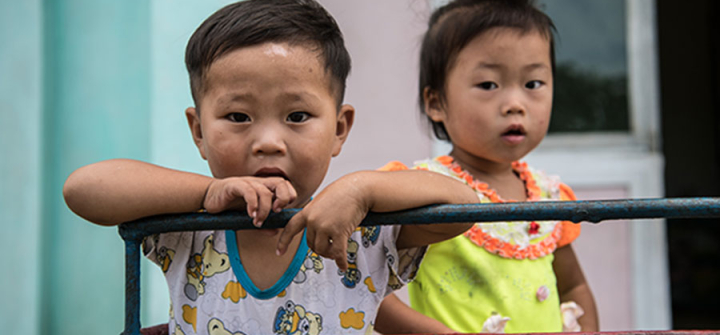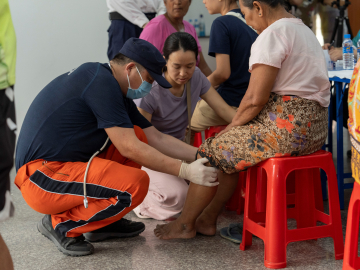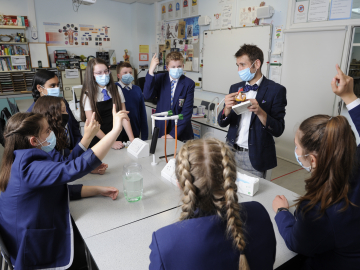How Sanctions Hurt North Korea’s Children
UNICEF and the World Food Programme provide food and nutrition aid to North Korean children—but a lack of funds, fueled by political tension and the US-led strategy of pressure and isolation of North Korea, have limited their reach.
The country’s most vulnerable children are paying the ultimate price. We estimate that up to 2,772 children may have died as a result of the sanctions and funding cuts.
We looked at the numbers of children left untreated for severe acute malnutrition and vitamin A supplementation to arrive at these numbers. Last year, out of 60,000 under-5 children with SAM targeted for treatment by UN agencies, 5,000 children were unreached, according to the 2019 DPR Korea Needs and Priority report. And, out of approximately 1.7 million children under 5 in the DPRK, UNICEF targeted 1.6 million for vitamin A supplementation—which 83,565 failed to receive it.
While the number of untreated children may seem small, those numbers can have big consequences.
Severe Acute Malnutrition (SAM)
SAM is, simply put, starvation, characterized by a low weight-to-height ratio and emaciation. Out of all children under 5 in the world, only 0.135% have SAM; in North Korea, this number is 3.5%.
SAM is rare in developed countries such as the US but prevalent in many low-income nations. Between 17% and 50% of children with SAM perish when they are left untreated. Even when treated, according to UNICEF, as many as 1 in 100 children with SAM could die.
This means that in North Korea, out of the 5,000 children with SAM that were targeted but untreated, we estimate that between 800 and 2,500 children may have died.
And, that figure is likely an underestimate, since UNICEF reports that up to 8% of treated children relapse back into SAM. Furthermore, we only considered SAM in our model. Conditions like moderate acute malnutrition and chronic malnutrition have lower mortality rates but still cause disability, which our numbers did not encompass.
Vitamin A Deficiency
We also addressed the impact of missed vitamin A supplementation, which is important for normal growth and immune system development. While most of the 1.6 million targeted were treated, tens of thousands—83,565 children—still missed out.
To determine how that might have contributed to child mortality, we considered a study done in Bangladesh, a similarly low-income country, which showed that vitamin A supplements lowered the under-5 mortality rate by 21.6%. To calculate the preventable deaths, we started with the expected deaths for the unreached population of 83,565: 1,588 children under 5 (derived by applying the WHO U5 mortality rate of 1,900/100,000 for DPRK). If UNICEF had been able to deliver Vitamin A supplementation to this group, then the expected deaths should have been 21.6% less: 343 preventable deaths.
Adjustment for Double Counting
Because vitamin A deficiency and SAM are related conditions, our models had to account for overlap. The total death estimate due to SAM and vitamin A deficiency came out to be between 1,122 and 2,772 deaths. To allow for a conservative estimate, we assumed that all untreated cases of SAM were also untreated for vitamin A deficiency. This meant that 5,000 children had to be subtracted from the vitamin A deficiency “untreated” number. Thus, we estimated that 78,565 children were untreated only with vitamin A supplements. The estimated number of deaths solely due to untreated vitamin A deficiency decreased from 343 to 322.
Total estimated preventable deaths
By combining the SAM death estimate and the new vitamin A deficiency death estimate, the final tally is between 1,122 and 2,772 preventable deaths if all the targeted population had been reached as intended.
We believe that sanctions and funding gaps were the chief reason for UNICEF and WFP’s inability to reach their targeted population. Last year, out of the $19.6 million that UNICEF requested (in the UN’s urgent humanitarian needs and priorities report), it only received $5 million—severely limiting the capacity for humanitarian assistance.
Additionally, we have noted that the delays in the UN Security Council’s humanitarian exemption approval process has averaged 99 days in 2018—further degrading operational capacity. This year, UNICEF is requesting $19.6 million. While ROK committed $3.5 million to UNICEF this year, that still leaves a $16.1 million gap.
The lives of ordinary North Korean people, as seen here with children under 5, should never be placed at risk when trying to achieve political objectives. The UN’s appeal for urgent humanitarian needs in North Korea should be fully funded. The protection of the marginalized and the vulnerable is paramount.
Jeongyoon Kim is a research assistant at the Program in Global Surgery and Social Change at Harvard Medical School and a rising senior at Bowdoin College majoring in Physics and Mathematics. Follow him on Twitter @AndrewXilKim
Kee B. Park, MD, MPH, has visited North Korea 20 times as the director of the North Korea Programs at the Korean American Medical Association. He is a lecturer on Global Health and Social Medicine with the Program in Global Surgery and Social Change at Harvard Medical School. Follow him on Twitter @keepark
Please join the tens of thousands of subscribers who rely on Global Health NOW summaries and exclusive articles for the latest public health news. Sign up for our free weekday enewsletter, and please share the link with friends and colleagues: http://www.globalhealthnow.org/subscribe.html
Children outside a nursery at Chonsam Cooperative Farm on August 22, 2018 in Wonsan, North Korea. Image: Carl Court/Getty Images




